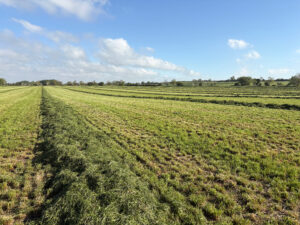Canals were once the backbone of freight transportation in the UK. But in the 21st century they have become a vital leisure and tourism resource, as well as an essential element of ‘slow living’. You may think that canals first appeared in the Industrial Revolution, but the history of our UK canals goes a lot further back in time.
Where did canals come from?
Canals were initially built by the Romans to fulfil a number of purposes such as irrigation, drainage, flood control, and taking clean water into the cities. They built the Fossdyke Navigation (historians are unclear about when and timings vary from 50CE to 120CE), an 11-mile stretch of canal built for navigation and drainage that links the River Trent with the River Witham in Lincoln. The canal is still being used today, meaning that, at nearly 2,000 years old, it could well be Britain’s oldest canal.
After the Romans left Britain, many of the canals built fell into disrepair. But during the Middle Ages, renovation works took place, including improving the towpaths to enable horses to be used to tow the boats. The Fossdyke Canal was refurbished on the orders of King Henry I in 1121. The Middle Ages also created canals by adapting natural rivers to form navigations that enabled boats to carry goods between towns and cities.
How canals contributed to the Industrial Revolution
Over time, more natural waterways across the country were ‘canalised’ to provide vital routes for the transportation of goods. Horse-drawn barges could carry considerably greater amounts of cargo than horse-drawn carts on the roads. This transportation network became integral to the success of the Industrial Revolution. With a greater demand for goods in the 18th and 19th centuries came the creation of completely man-made canals. Technology was developed that allowed engineers to plan and create canals from scratch, instead of being restricted to using rivers that were already there. Building canals to order enabled manufacturers to take their goods directly where they needed to be. The first of these ‘pure’ canals in the UK was completed in 1741 – the Newry Canal in Northern Ireland, connecting the Tyrone coalfields with the Irish Sea.
The 1790s saw ‘canal mania’, a period of feverish canal building. A total of 34 canals were approved between 1791 and 1793 alone, though not all those canals were completed and some were never even started. However, this was the golden age of British canals, offering around 4,000 miles of navigable waterways.
The railway network expanded in the 1820s, meaning UK canal systems were used less and less as a way of carrying freight.
Canals and the leisure industry
In the second half of the 20th century, canals became important to the tourism and leisure industry. The canal network was nationalised alongside railways and ports in 1948. Although some canals were in desperate need of repair and it was suggested that others should be closed completely, no legislation was passed so nothing happened. However, enthusiasts still used the canals for holidays and leisure, and private groups formed to do what they could to restore stretches of waterways.
It wasn’t until the 1960s that the economic importance of canals to the leisure industry was realised, with the Transport Act of 1968 providing vital public funding to the restoration projects that had been started by enthusiasts.
Canals now offer many values and benefits to the UK, including economic opportunities for travel and leisure as well as waterside regeneration. The waterways also provide local communities with vital green spaces to improve our overall health and wellbeing.



